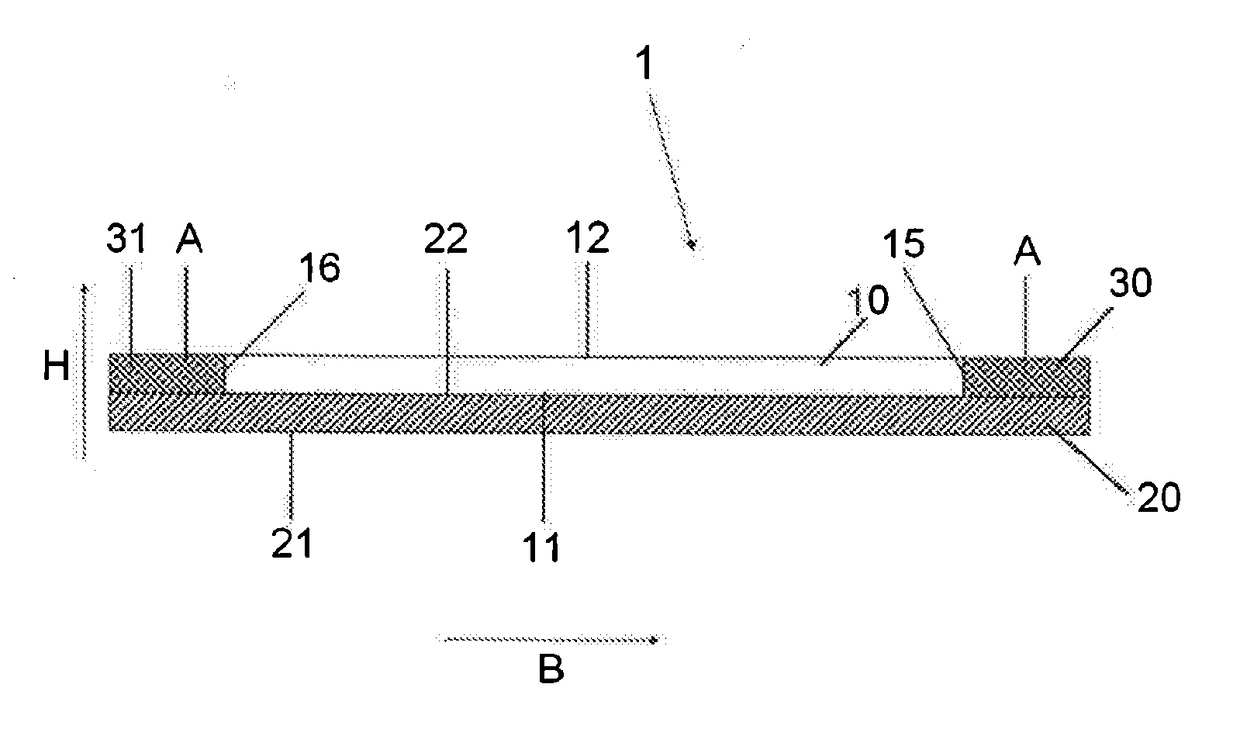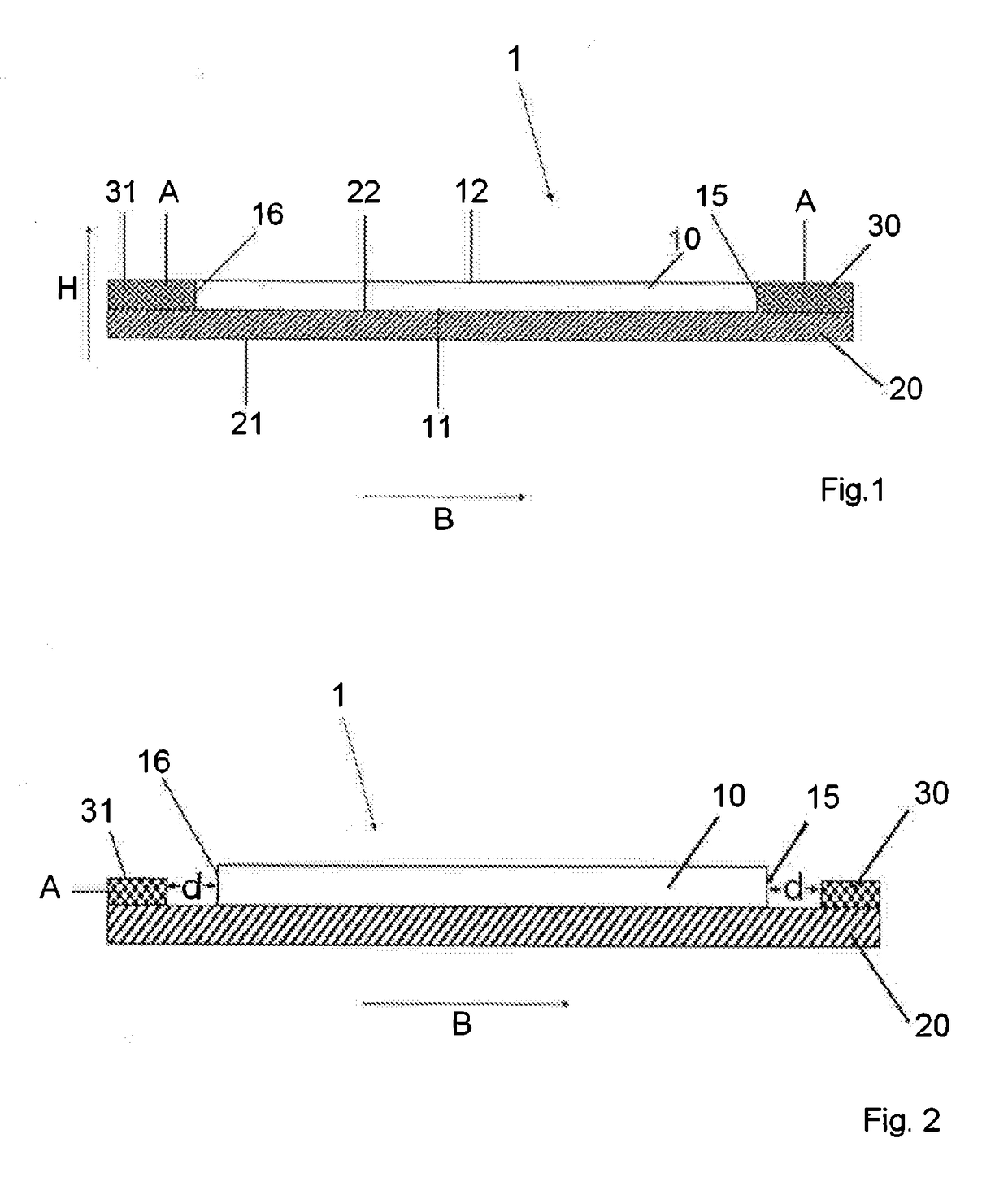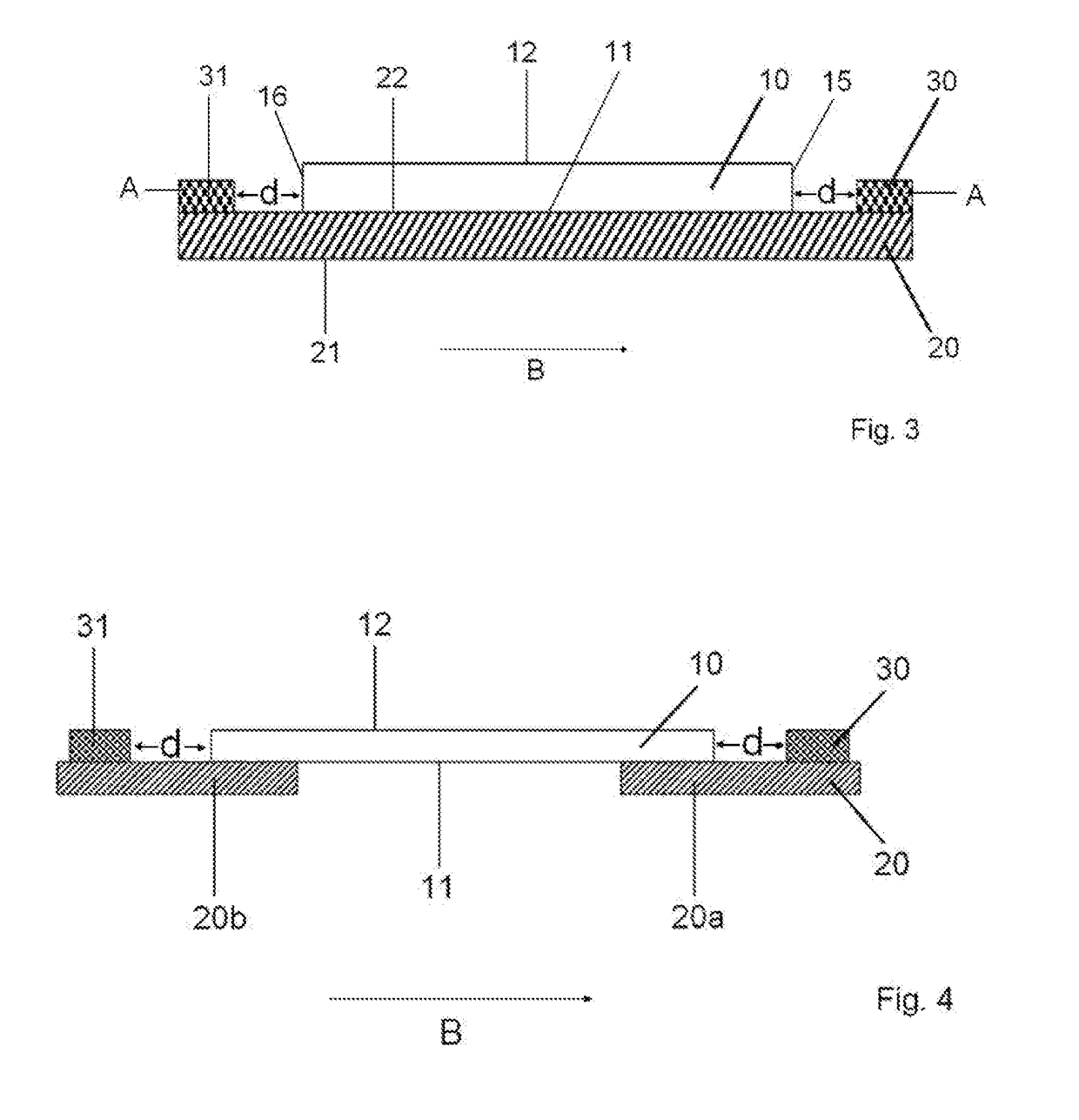Thin glass film composite web with reinforcing strips
a composite web and thin glass film technology, applied in the field of thin glass film composite webs, can solve the problems of increasing the risk of web cracks, difficult winding of thin glass film onto a roll, and high bending stiffness of thin glass film, and achieves favorable wounding, reduced bending stiffness, and high bending stiffness
- Summary
- Abstract
- Description
- Claims
- Application Information
AI Technical Summary
Benefits of technology
Problems solved by technology
Method used
Image
Examples
Embodiment Construction
[0029]First, a film web is understood to be a sheetlike structure whose dimensions in one spatial direction, i.e. height or thickness, are significantly smaller than in the other two spatial directions. The main extension is defined by length and width. In a film web, moreover, width and thickness are specified. As a rule, however, the length of the film is not specifically defined. The length of the film web is ordinarily at least 10 times greater than the width. The film web can have a simple continuous configuration, or it may also be interrupted. It can consist of a single material or areas of different materials, but can either have a constant thickness over its entire surface area or have areas of different thicknesses. The film web can consist of one or a plurality of layers that are arranged in congruent fashion, or may have an at least partially non-overlapping configuration.
[0030]A thin glass film web in understood to refer to a film web having a height of 10 to 200 μm, pr...
PUM
| Property | Measurement | Unit |
|---|---|---|
| elastic modulus | aaaaa | aaaaa |
| thickness | aaaaa | aaaaa |
| thickness | aaaaa | aaaaa |
Abstract
Description
Claims
Application Information
 Login to View More
Login to View More - R&D
- Intellectual Property
- Life Sciences
- Materials
- Tech Scout
- Unparalleled Data Quality
- Higher Quality Content
- 60% Fewer Hallucinations
Browse by: Latest US Patents, China's latest patents, Technical Efficacy Thesaurus, Application Domain, Technology Topic, Popular Technical Reports.
© 2025 PatSnap. All rights reserved.Legal|Privacy policy|Modern Slavery Act Transparency Statement|Sitemap|About US| Contact US: help@patsnap.com



